Venice // Milan ~by Doug
I can’t believe it’s been a month since we all arrived in Venice! It’s been going by incredibly quickly, but it’s been an incredible experience so far. It’s nearly half over, but there is plenty more to do and see every day! Earlier this week I decided to take a bit of a break of working on my cumulative paper and explore two Sestieris I had yet to photograph in detail. I’ve spent a lot of time walking around in Venice with my camera, trying to get myself a little bit lost to get to know the layout a little better, while simultaneously trying to discover a few hidden photogenic gems. This city is beyond inspirational, and so it wasn’t difficult to find some stuff to snap a few photos of.
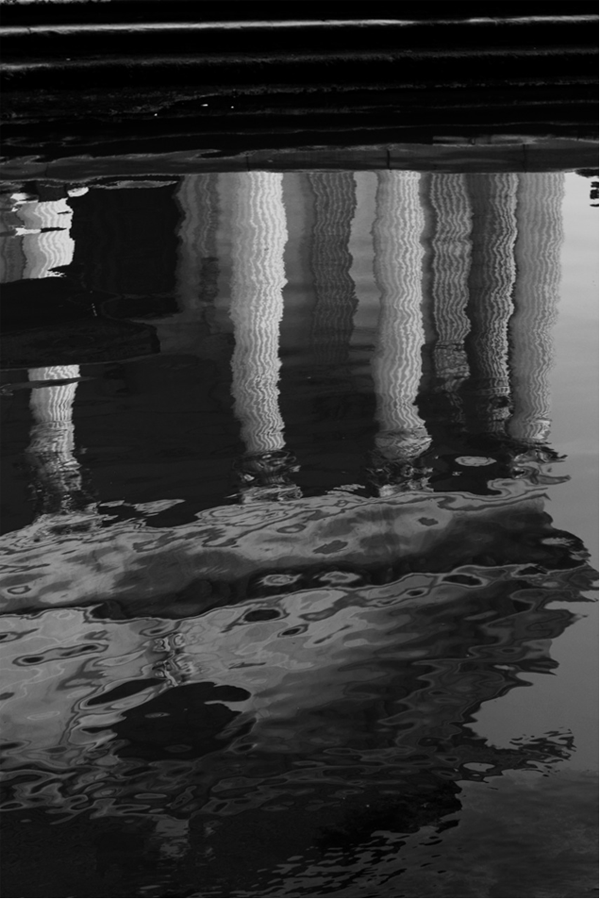
This is a beautiful Classic church in the middle of San Croce, just a few canals north of our house. It’s right beside the IUAV library, which has a huge collection of books on contemporary art, architecture, and design. We’re lucky enough to have access to the library itself.
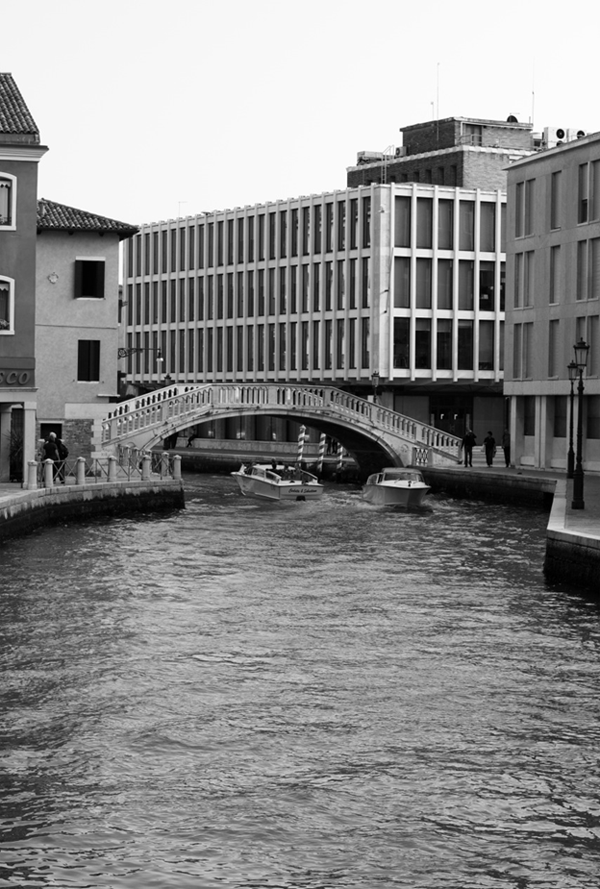
Venice is a very old city by Canadian standards, and so for me, I very much enjoy taking pictures of more modern buildings, which stand out like sore thumbs amidst the centuries of history on every street corner in the city. I also find it interesting that even buildings such as this keep to the typical three-story Venetian building. It would be difficult, and probably impossible to even imagine a skyscraper of any kind in a city like this. In any case, it’s interesting to see the modern take on the architecture of this very unique city!
The contemporary art course that I am taking while over here includes two major trips to cities in Italy, which include Milan in the west and Bolzano in the north. This Thursday we went to Milan, and had an incredible experience, taking in the city and three major contemporary art galleries. The visit to Milan included a trip to the Milano Triennale Design Museum, the Novecento Contemporary Art Museum in the Downtown Centre, and an art installation by Dan Flavin which was on the southern edge of the urban centre of Milan in a wonderful church called the Chiesa Rossa. I’ll give a little bit of history on what was inside each of these places, because they’re all incredible and worth mentioning!
We took an early train to Milan and stopped at the enormously beautiful train station which was redesigned during the Fascist period in Italy. The Neoclassical style conveys the enormity of the building, and the industrial quality of the area where the trains are held really speaks not only to the industrial period of Italy at the time, but it also directly references the shape of the Milan cathedral with its enormous interior and the side aisles.
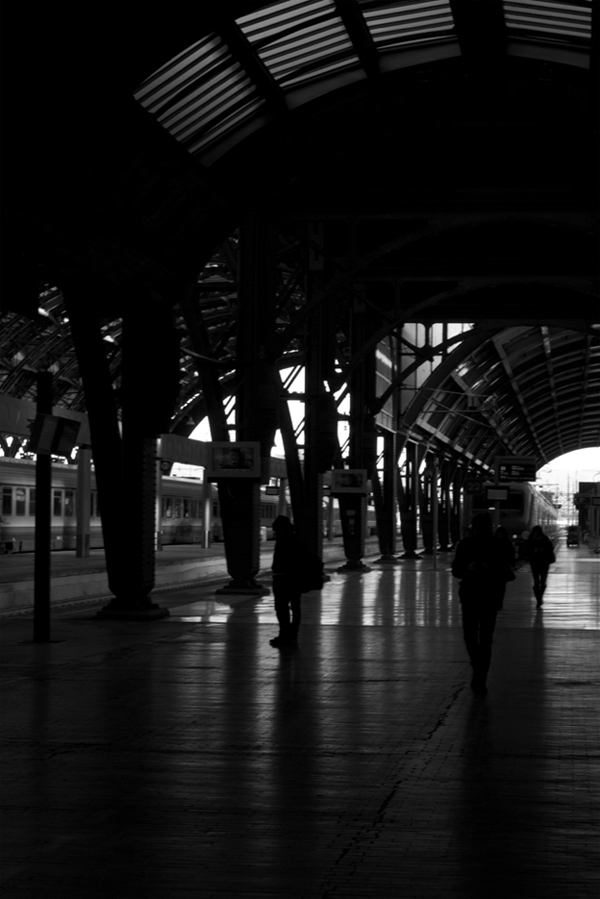
The enormity of it all was just impossible to convey in a photograph, but I managed to get some moody ones! You can see the kind of contrast between the industrial train-yard and the more classic architecture if you compare the pictures above and below. It’s a very interesting place, and a great introduction to Milan!
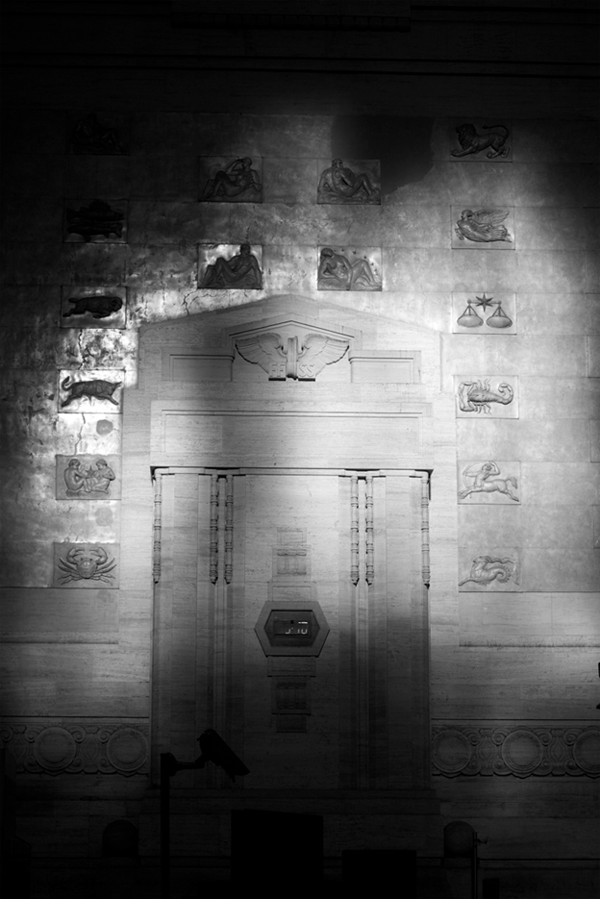
The classical entrance portal was enormous, and reminded me a whole lot of Grand Central Station (if only for the scale of it).
After a brief Metro ride, we ended up in a nice little area of Milan that had an enormous park, and where the Milano Triennale Design Museum could be found. The building itself was fantastic, and while I didn’t get any photographs of the exterior, try imagining a huge entrance that looks kind of like a Pantheon, but with square columns instead of round ones. The building was built in the 1930s, when this style was certainly popular. There are two wings the museum, each with two floors. An impressive aspect of the building is that the lower floors on both sides house curved sections. You go in to an exhibition on the right, let’s say, and you go down a long hallway exhibition space until it begins curving to the left until you end up back in the main area of the museum. The building was originally meant to hold the Design world’s response to the Venice Art Biennale, which happened every two years. It continued for a while, but eventually it began housing its own impressive collection, and is now holding exhibitions all year round.
We were there to check out three exhibitions that had to do with our Contemporary art class. The first of the three I visited was an exhibition on the use of copper (or rame in Italian) focusing on the material’s use in art, design, architecture, and technology. There were some fascinating artworks on display, one in particular I thought was worth mentioning.
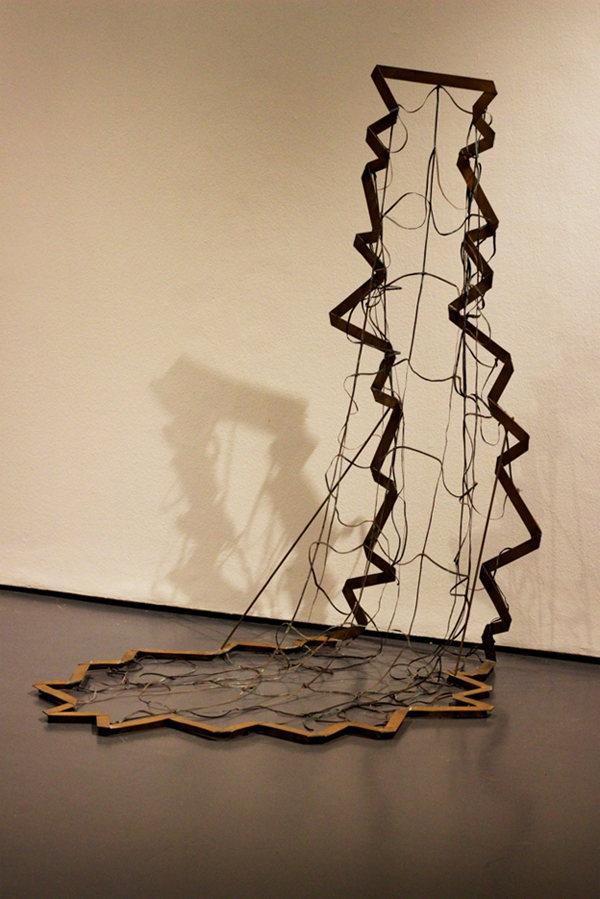
This artwork is called Velo, and it is by Hidetoshi Nagasawa. The artist went on a ridiculous bicycle trip from Tokyo to Milan, where he wanted to soak up and try and investigate western culture and their differences in perception. He was overtly fascinated with the mental process. He was obsessed with discovering and exploring the concept of “the idea” and everything associated with inspiration and thought. While doing so, he tried to reunite eastern and western perspective, incorporating both points of view into his work. In his use of copper in this particular work, he attempted to explore the concept of time and space, using a minimalist frame, and subjecting the work to the process of change (associated with time) called oxidization, which explains why the roof of the Canadian parliament is green. Through this process of change and space, Nagasawa explores the two sides of objects, the physical, the immediately perceptible, and the metaphysical, which is beyond that which can be seen, which one must personally come to terms with. He draws on symbols like angel wings and veils to symbolize this metaphysical unknown. They suggest incorporeal and divine presence within their simplicity and transparency. The work Velo (Veil), suggests a sort of unveiling beyond the physical world of time and space, which the copper is subject to, implying that the continually changing world is just a veil that stand between us and what cannot be seen. I thought it was a rather interesting artist and artwork, just to give you a taste of what these artists were doing with such an ugly, industrial style material.
The second exhibition was an information and research-based project that focused on the architectural development of every country in Africa. It highlighted the problems and hardships that the country is experiencing in the face of modernity. In particular, something that stood out was that the continent is facing an incredible population growth, without the infrastructure or the economic stability to support these changes. The exhibition focused on solutions to this problem, giving architects a challenge to reinvent the current cities and small towns. It explored primarily how architecture can help smaller communities become more economically efficient and beneficial for everyone living there, keeping in mind that the access to water, sanitation, and community spaces are central.
The third exhibition was the one I had the least time to explore, and featured the history of avant-garde designers and how they mobilized to move the art form forward. The Triennale itself was a wonderful experience, and I took a lot from it, particularly the exhibition focusing on the development of Africa. After a brief lunch, we hopped on the metro and headed to the downtown core, where we were to check out the Novecento Museum of Contemporary Art. We spent a little bit of time in the enormous gallery in the centre of the city, right beside the Milan Cathedral, where the first Prada store was ever opened, and where it still is today. The gallery itself also combined the industrial metal-work roof with a more Neo-Classical base.

We then headed inside the Novecento museum, which was recently redesigned and reopened in 2010. The art is entirely contemporary, and had an exhibit on Yves Klein and Lucio Fontana’s work, two important artists of the 20th century. There was one rather interesting quote by Yves Klein that I thought was interesting. He was constantly thinking about space and the cosmos throughout his career, and a lot of his work, with its signature blue style, attempts to evoke the sense of space and empty creative potential of that void beyond earth. I included a picture of one of his canvases, which he pierced with a pen and placed a backlight behind it, so as to evoke that sense of creative space beyond what can be seen. There was one quote that I jotted down because I felt that it spoke directly to the ideas within his work:
“It’s not with rockets, Sputnik, or missiles that man will conquer space […]; but by inhabiting it with his sensibility […] being saturated by it and becoming one with the very life that constitutes this space, where the calm and extraordinary power of pure imagination reigns.”
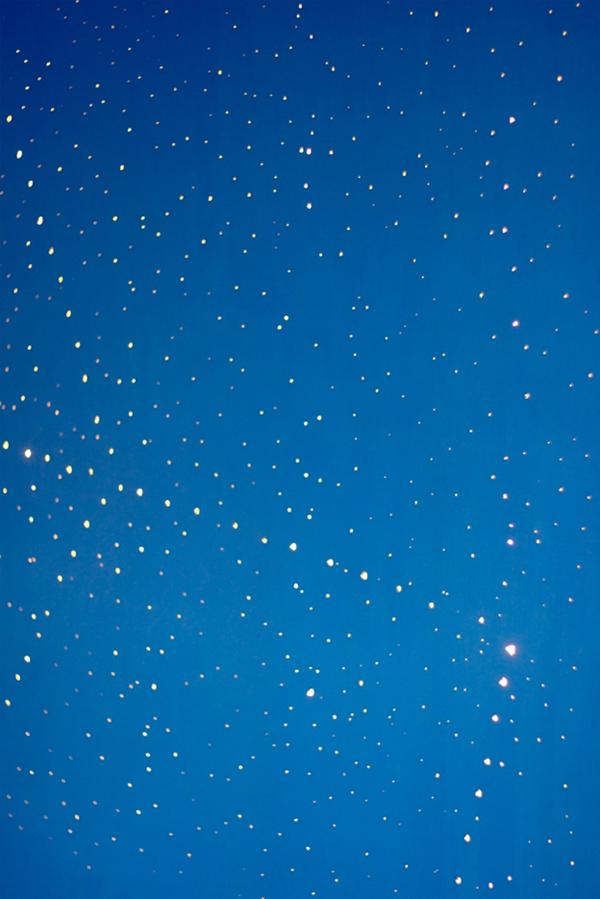
I also particularly enjoyed the Museum’s collection of Futurist, sculptural, and light installation works. I also found myself enthralled with the architecture of the building itself, which used light in very interesting ways, that I tried to capture in more moody black and white photographs.
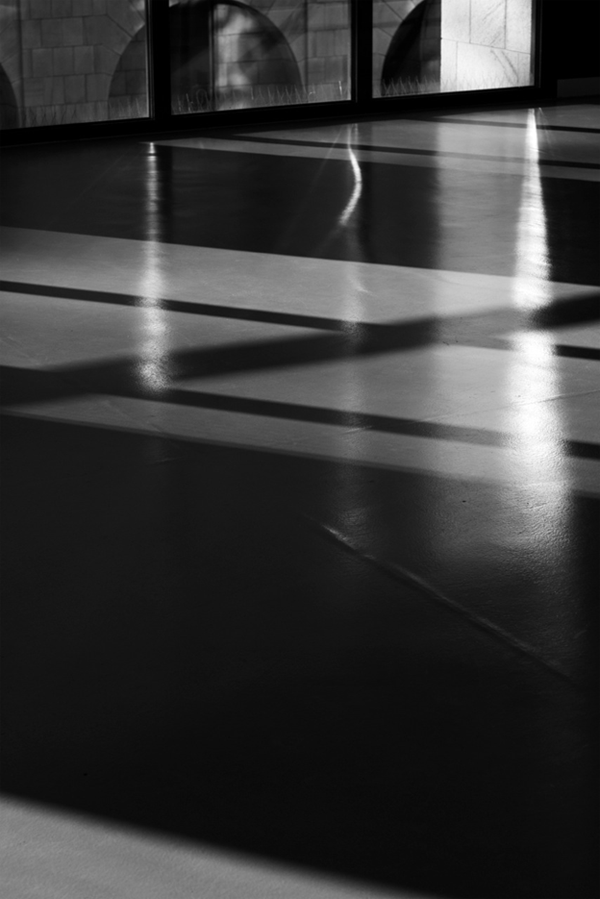
After the incredible Novecento museum, we headed to our last stop of the day. We took a very long metro ride all the way south to the last stop on the green line of the urban centre, and ended up in just a regular suburban neighborhood. We walked down a street until we arrived at yet another church that had direct traces of the 1930s aesthetic. Inside, there was an installation by the Minimalist Dan Flavin, who designed the church. He came from a religious background, and thus had the idea of installing coloured fluorescent lights inside the nave, the transept, and the apse, all different colours. He settled on blue for the name, pink for the transept, and heavenly yellow for the apse, where the altar could be found. The church is still used today, as a regular church, just with a little bit of Minimalism added onto it. It was a relatively simple installation, but it was quite an interesting experience. It’s important to note as well that Dan Flavin died soon after designing the church, and so two years later the Fandazione Prada installed it in this church. in his memory. He never got to see it in its full form. That added another dimension to the whole experience. It was difficult to capture the size of it with my 50 mm lens, but I did what I could!

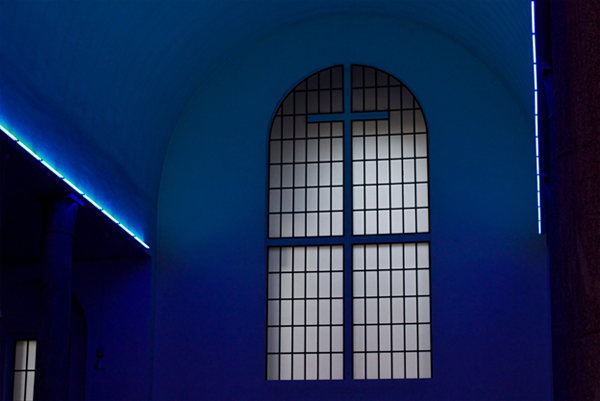
After such an incredible art-filled day (which is of course my favourite type of day), we made our way back to the station and headed home to Venice. Travel week is coming up soon, so I’ll be heading to Rome for the whole week, but I won’t be posting any of that trip on the Carleton blog.
If you’d like more photos, art, and thoughts, you can follow my personal blog over at dougdumais.wordpress.com.
Arrivederci!